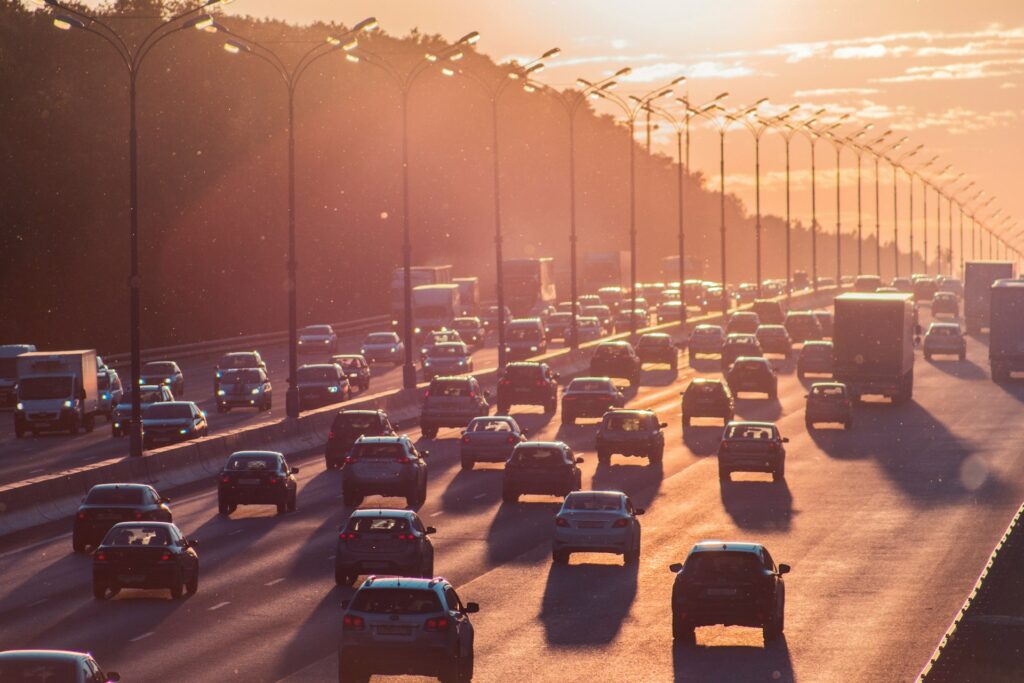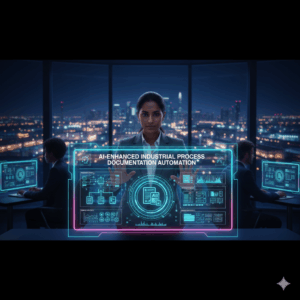Intelligent Traffic Solutions: How Artificial Intelligence Is Putting an End to Urban Gridlock

Intelligent Traffic Solutions: How Artificial Intelligence Is Putting an End to Urban Gridlock
Congestion in metropolitan areas is more than just an annoyance; it is a daily catastrophe. This is something that is obvious to everyone who has ever been stuck in traffic that was extremely congested, moving ahead in a frustrated manner as the minutes turned into hours. In cities all around the world, commuting has become a tedious experience due to the fact that it results in lost time, wasted fuel, increased pollution, and growing stress levels.
Now, what if the answer does not include the construction of more roadways, flyovers, or larger intersections? What if the actual solution to the problem of cluttering our streets is found in data, algorithms, and decision-making that takes place in real time? Enter the world of artificial intelligence-powered smart traffic systems, a novel method to managing urban mobility that is already revolutionizing the everyday commute in some of the biggest cities in the world.
The Reasons Why Conventional Traffic Systems Are No Longer Effective
The timing of conventional traffic signals is inflexible and predetermined. They are adjusted every thirty, sixty, or ninety seconds, regardless of the number of vehicles that are waiting or the directions that are experiencing congestion. The situation is more controllable in smaller communities. However, in huge cities with millions of cars, this rigidity results in congestion, wasted green lights, and a rhythm of perpetual stop-and-go traffic.
When conditions such as weather, construction, events, and accidents are taken into consideration, the system begins to crumble under the weight of the strain. In an effort to catch up, cities continue to expand infrastructure, but in many cases, this merely encourages more people to drive. More roads are not the only thing that is required. This is a more efficient method of managing the ones that we already have.
How Artificial Intelligence Can Improve Traffic Flow
Instead of depending on predetermined timetables or human operators, cities are able to adjust to traffic situations in real time thanks to artificial intelligence, which is changing the game. In order to monitor the flow of automobiles, pedestrians, and even bicycles, traffic systems that are powered by artificial intelligence make use of a network of cameras, sensors, and linked devices. Traffic lights, diversions, and lane prioritization are automatically adjusted by them after they analyze trends, identify places of congestion, and detect congestion locations.
Imagine that you are providing the city with its very own brain—a system that monitors, learns, and responds around the clock, therefore increasing its efficiency with each and every data point that is gathered.
The use of adaptive signal control, in which the timing of traffic lights is continually adjusted depending on the flow of vehicles, is one of the more common approaches. This has resulted in a considerable reduction in travel times and has decreased typical junction delays by as much as forty percent in some areas.
Success Stories from the Real World
The advantages of artificial intelligence-powered traffic systems are now being realized by cities all around the world: Artificial intelligence has been included into Barcelona’s traffic management system, which makes use of machine learning to perform real-time adjustments to signals in order to minimize congestion. What is the end result? Less time wasted waiting and fewer pollutants.
An artificial intelligence traffic initiative known as Surtrac has been implemented at a number of junctions in Pittsburgh, which is located in the United States. With the help of this technology, travel times have been cut by twenty-five percent, there have been thirty percent fewer pauses, and there has been a twenty percent reduction in emissions.
The Chinese city of Hangzhou, in conjunction with Alibaba, has created a platform known as “City Brain” that makes use of artificial intelligence to monitor traffic and improve routes. Because the system is so efficient, emergency vehicles are able to get at each site more quickly, and the average speed of traffic has improved by fifteen percent.
Smart traffic systems are not merely a theory, as shown by these instances; rather, they are solutions that have been demonstrated to have a concrete effect.
Beyond Automobiles: The Emergence of Multimodal Transportation
AI traffic systems provide cities the ability to think about more than simply the flow of cars. A more comprehensive approach to urban mobility is ensured by the fact that they take into consideration not only buses and bicycles but also pedestrians and even electric scooters.
When there is significant bike traffic, smart junctions in Copenhagen provide priority to bicycles. In Singapore, artificial intelligence is utilized to handle complicated pedestrian-heavy zones and guarantee that crossing lights adjust to real-world behavior.
The integration of artificial intelligence with public transportation networks allows for the rerouting of buses or trains depending on factors such as congestion, arrival delays, or real-time passenger demand. This not only helps to alleviate traffic congestion, but it also encourages more people to leave their automobiles at home, which is an essential step toward achieving long-term economic viability in metropolitan areas.
In order to combat traffic, it is necessary to use prediction rather than just reaction.
The capacity of artificial intelligence to anticipate traffic issues before they occur is one of its most significant capabilities. Artificial intelligence is able to estimate congestion hours in advance by studying historical traffic patterns, weather forecasts, event schedules, and real-time circumstances. It may then proactively redirect traffic or change signal patterns to prevent jam completely. The importance of this cannot be overstated, particularly in times of crisis or large-scale events, when human-led traffic control often fails to meet expectations. The ability of artificial intelligence to dynamically adapt to evolving events with speed and accuracy has the potential to save lives by providing ambulances, fire vehicles, or police with routes that are quicker and clearer.
Difficulties in Achieving Widespread Adoption
In spite of the promise, not all cities will be able to make the transition to intelligent traffic systems overnight. It is true that there are obstacles:
- The installation of sensors, the upgrade of equipment, and the deployment of software sometimes come with high initial expenses.
- Concerns around privacy, particularly in circumstances when face recognition or license plate monitoring devices are used.
- Concerns around interoperability, since older traffic gear may not be able to connect well with contemporary AI systems.
- The availability and quality of the data, which is essential for artificial intelligence to make appropriate conclusions.
However, a growing number of governments and city planners are coming to the realization that investing in intelligent transportation is not only a luxury but rather a must.
What Does the Future Hold for Transportation: Autonomous Vehicles and Artificial Intelligence-Based Traffic?
When it comes to this progression, the next stage might be a future in which autonomous vehicles and artificial intelligence-based traffic systems collaborate. Imagine a city in which autonomous cars are able to interact directly with traffic signals, pedestrians are able to utilize crosswalks that are equipped with smart technology that responds to their presence, and traffic bottlenecks are rendered equally obsolete as payphones.
Although it may seem like something from the future, we are really far closer than you may expect. AI not only offers the possibility of putting an end to traffic congestion, but it also promises to completely reimagine the ways in which cities breathe, move, and flourish.
Enhanced Streets, Improved Quality of Life
The problem of urban traffic is not limited to a technological issue. It is a human being. Every hour that is wasted sitting in traffic is time that might have been spent with family, at work, or resting. With each additional pollution cloud, the climate catastrophe continues to worsen. In the event that an ambulance is obstructed, it might be the difference between life and death.
It is possible to go ahead with artificial intelligence, not just to make our cities move more quickly, but also to make them more compassionate, habitable, and sustainable. The future of traffic will not include the construction of more roadways. Increased intellect is the focus here.





